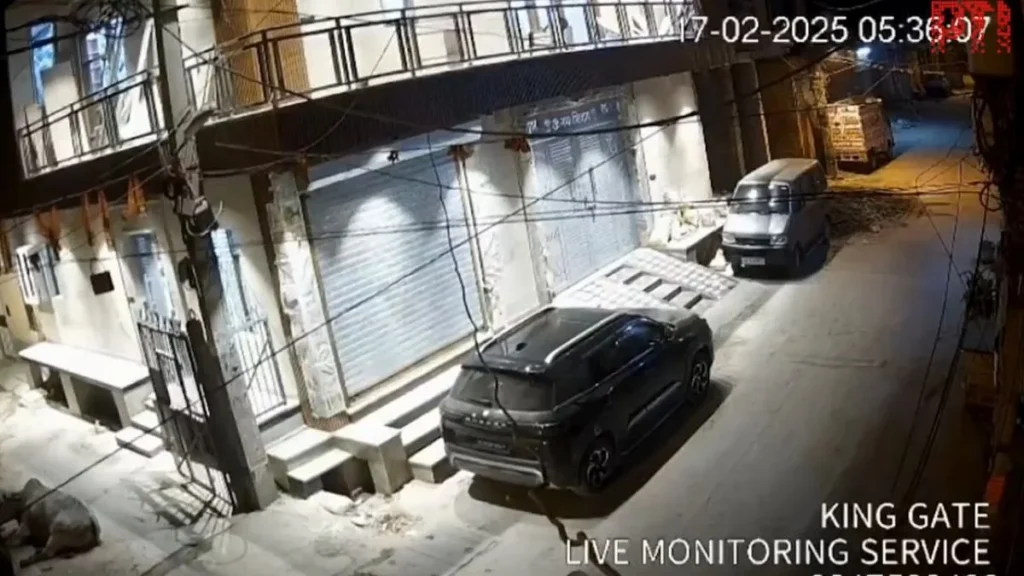Introduction
Delhi earthquake of magnitude 4.0 struck at around 5:36 AM on Monday, jolting residents of Delhi-NCR awake with strong tremors. Videos circulating online captured the moment as people rushed out of their homes in panic, with many describing it as one of the strongest earthquakes they had ever experienced in the region.
One resident recalled, “I was in front of my dressing table when everything started shaking. At first, I thought it was a heavy vehicle passing by, but soon realized it was an earthquake.” Another resident shared, “I’ve never experienced anything like this before.”
While no damage or casualties were reported, the intensity of the tremors left people unsettled. The National Centre for Seismology (NCS) confirmed that the earthquake registered a magnitude of 4.0 on the Richter scale, striking at a depth of 5 kilometers with New Delhi as its epicenter.
Is a 4.0 Magnitude Earthquake Strong?
A 4.0 magnitude earthquake is classified as moderate and typically does not cause structural damage. Here’s how earthquake magnitudes compare:
- Below 2.5 – Generally not felt.
- 2.5 to 5.4 – Minor; rarely causes damage.
- 5.5 to 6.0 – Can cause slight structural damage.
- 6.1 to 7.0 – Can cause damage to buildings and weak structures.
- 7.1 and above – Major earthquakes with potential for widespread destruction.
Given these classifications, the Delhi quake should have felt mild, yet residents reported strong shaking. This raises the question: Why did this earthquake feel so intense?
Why Did the Delhi Earthquake Tremors Feel So Strong?

Several factors contributed to the amplified intensity of the earthquake in Delhi:
1. Epicenter Proximity
New Delhi was the epicenter, meaning it was directly above the earthquake’s focus. Since seismic energy is strongest at the epicenter, the tremors felt significantly more intense compared to quakes originating farther away.
2. Shallow Depth
The earthquake originated just 5 km below the surface. Shallow earthquakes cause stronger surface shaking because there is less rock and soil to absorb the seismic waves. In contrast, deeper earthquakes (50 km or more) tend to disperse energy over a wider area, reducing their impact.
3. Densely Populated Area
Delhi is a densely populated urban zone with numerous high-rise buildings constructed close together. When seismic waves travel a short distance before reaching structures, the impact is amplified. High-rise buildings are also more prone to swaying, which can make tremors feel even more severe.
4. Rumbling Sound
Many residents reported hearing a loud rumbling noise accompanying the tremors. This sound is often caused by tectonic movements and bursts of seismic energy traveling through the ground, which can intensify fear and the perception of strength.
5. Local Soil and Geology
Delhi’s underlying soil composition can amplify seismic waves, leading to stronger shaking than expected. Certain soft soils and loose sediments tend to resonate with earthquake waves, further intensifying their effects in localized areas.
Delhi’s Seismic Risk Factor
Delhi falls under Zone IV of India’s seismic hazard map, which classifies it as a high-risk area for earthquakes. According to the Delhi Disaster Management Authority (DDMA), this zone typically experiences quakes ranging between 5.0 and 7.0 magnitude, though stronger earthquakes have occurred in nearby regions.
Despite this, experts emphasize that Delhi is structurally prepared to handle low to moderate intensity quakes. The city frequently experiences minor tremors due to seismic activity in Himalayan fault lines, but these usually go unnoticed.
Additionally, Delhi’s infrastructure has improved over time, with stricter building regulations in place to mitigate earthquake risks. However, concerns remain over older buildings that may not be adequately reinforced against seismic activity.
Expert Insights: No Cause for Alarm
OP Mishra, Director of the National Centre for Seismology, reassured residents that there is no immediate risk following this earthquake. He stated that Delhi’s tremors were not caused by plate collision—a common trigger for stronger quakes—but rather by natural rock fractures at shallow depths.
Mishra also dismissed concerns about aftershocks, explaining that any subsequent tremors would likely be significantly weaker. He further clarified that while Delhi is located near major fault lines, earthquakes of this magnitude are expected and normal.
How to Stay Prepared for Future Earthquakes
Given that Delhi falls within a high-risk seismic zone, residents should always be prepared for future tremors. Here are some essential earthquake safety tips:
- Secure Heavy Furniture: Anchor bookshelves, cabinets, and appliances to walls to prevent tipping during an earthquake.
- Know Emergency Exits: Identify safe spots in your home, such as door frames and sturdy tables.
- Prepare an Emergency Kit: Include food, water, flashlight, first-aid supplies, and important documents.
- Practice Drop, Cover, and Hold: In case of strong tremors, get down, take cover under sturdy furniture, and hold on until shaking stops.
- Stay Informed: Follow updates from the National Centre for Seismology and local disaster management authorities.
Conclusion: Understanding Earthquake Intensity
Although a 4.0 magnitude earthquake is typically moderate, factors like shallow depth, urban density, and epicenter location made this event feel unusually strong.
Delhi residents can take comfort in expert reassurances that such tremors are common and pose minimal risk. However, given the city’s high seismic activity, it remains important to stay informed and prepared for future events.


